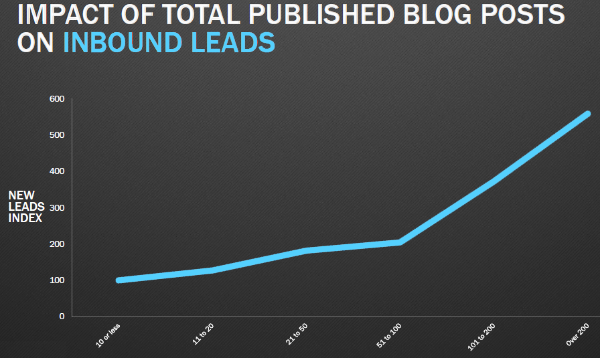Numbers don’t lie.
Right?
There are countless ways for creating the anatomy of a perfect blog post.
This is one of them.
According to science and numbers.
300 Words Per Minute
Your job is to understand your readers as much as possible.
I’m not just talking about knowing your target customer profile, which focuses a lot on the “why” your potential customers are consuming content.
I’m talking about the logistics of how they consume. Starting with how fast they read and how much they want to digest.
While it’s not as exciting as the why, it’s equally important.
The average adult reads 300 words per minute.
If you know your reader is going to go through your post at that speed, you know it needs to be simple and easy to understand.
This is one of the golden rules of writing sticky blog posts.
If you’re too complex, instead of slowing down, your readers will leave.
16% Word For Word
You know someone is speed reading your post.
But did you know that only 16% of people are reading it word for word?
This means that in addition to creating easy to digest content, your post needs to be easy to skim. So:
- Leave out the dull parts.
- Add more headings than you think are necessary.
- Repeat yourself.
Yes, repeat yourself.
This might seem counterintuitive, but if people are skimming, chances are they’ll miss something. So, as long as your post is meaty and has a good flow, feel free to repeat a concept.
Clearly, understanding how your customers consume what you say is vital to your success as a blogger.
Now that you know how people are consuming your blog – paired with the obvious reality that more of your readers are digesting it on mobile devices – let’s dive into the science of what your blog format should look like.
Over 2,000
There are 5.1 billion searches on Google every day.
That’s where your readers are going when they’re looking for you. (Or more specifically, when they’re looking for something, and you’ve created content to address that something.)
Hence, when you’re blogging, the ideal length to be showcased on Google’s homepage is something you should know.
The average page that ranks #1 on Google has 2,000+ words.
There’s a ton of data that suggests Google loves longer posts.
But…
As John Morrow – one of the top guest bloggers in the world – continually says: “People read blogs because they want to be entertained.”
I guess this is why 84% of us are in the habit of skimming them. We find them boring. If they really were compelling, we’d hang on to every word.
Think of the last book you couldn’t put down.
That’s the goal.
If being long means being boring, be short.
If you’re going to write an average of 2,000 words, make them count.
6-8 Times A Month
That may be how often some of us floss.
And it’s also how often you should blog.
Why?
An online marketing leader released a study showing that companies who increased their blogging frequency from 3-5 times a month to 6-8 times a month almost doubled their inbound leads.
In fact, the same study showed that businesses who increased the number of posts on their site from 11-20 to 21-50 saw a 45% increase in website traffic.
It makes sense.
A blog with a limited number of posts is less likely to capture your attention, whereas the more content it has in a specific area, the more likely there will be a post that will apply to your specific question or thought or learning objective in that area.
This is why Netflix has over 3,000 movies and 20,000 TV episodes.
While it’s hard to overcome early blogging hurdles, the more you do, the more likely you are to be successful.
For example, sites that have 51-100 posts generate almost 50% more traffic than those with less than 50 posts. And companies with over 200+ articles generate – on average – 500% more leads than those with less than 10 posts.
p.s. Don’t be too keen.
There isn’t much difference between businesses that blog between 6 and 8 times a month and those that to between 9 and 15 posts a month. So focus on creating relevant content that converts.
Your Front Door
It counts.
Nielsen Norman Group did an interesting eye tracking study to see which format is better for blogs.
This is what they discovered.
On sites with full length articles on their home page, people were less likely to scroll and see additional topics beyond the first post or two. Most likely because the first ones didn’t interest them.
On sites that have a short summary of posts on their blog page, people are more likely to find what they’re looking for.
… summaries are usually superior to full articles because they let you expose users to a broad selection of topics.
Offering more topics increases the likelihood that users will find something that really interests them and thus will click through to read more. (As opposed to leaving.)
– Nielsen Norman Group
Where Science Fails Your Perfect Blog Post
The rotten truth about creating a perfect blog post is that – no matter how compelling it is – 97% of your readers won’t buy something today.
However, 70% of them will go on to buy something similar to what you sell in the next 2 years.
The goal of creating content is to capture that 70%, so when they’re ready to buy, they buy from you, not your competitors.
So, what blogging format do you fancy?






